Description
Written by: David R. Suhs in collaboration with Barbara Smith Jang & Frances Townsend
Theme: The life and ministry of Jesus in clown pantomime. The life and ministry of Jesus Christ is portrayed in six continuous scenes using only four clowns in a pantomime with background music.
It is hoped that the message is more powerful than words and will be an inspirational program for all ages. The Scenes include: 1) “The Coming”; 2) “The Calling”; 3) “The Healing”; 4) “The Praying”; 5) “The Teaching”; 6) “The Communing”.
Author Notes: Yesu is the Korea word for Jesus and is pronounced Ye’-soo and is written . Yesu, the Life of Jesus was the work of three writers, David Suhs, Barbara Smith Jang, and Frances Town-send, but its inspiration was a young lady named Chung Ran Kang and a small deaf congregation in the city of Jeonju, Republic of Korea. This clown and pantomime play was originally written for Ms. Kang and a group of deaf young people from a Jeonju church who became excited about the potential of clown ministry and specifically this play. They wanted to present Yesu not only to their own congrega-tion, but also to other deaf and speaking congregations throughout Korea. It was a great blessing that Yesu-The Life of Jesus was published in 1990 by Contemporary Drama Service-Meriwether Publishing Limited and the royalties obtained from the publication were donated to Ms. Kang and her adopted deaf family known as the “Home of Hope” and the deaf congregation in Jeonju, Korea.
Yesu is now a blessing to share with DramaShare members who we trust will present it to bring glory to God and “the Lord’s Laughter” to all who view it.
Cast: 1) Four (4) clowns/pantomimes 2) An optional fifth clown/pantomime could be added to show title signs 3) Cast members may be men and/or women in their teens to adults
Time: Thirty (30) minutes for the six continuous scenes (Add five minutes for an introduction)
Props: 1) The entire play is meant to be in pantomime, so there are no requirement for props 2) Exception: If you choose to use Scene 5 -“The Teaching” (Option #2) you could use the following props: a) Four balloons of various colors and four (4) balloon sticks b) One pin c) Simple Mask d) Minister’s or graduation robe e) Small heart shaped box f) Handkerchief
Special Instructions: Yesu was originally designed for four clowns/mimes to pantomime with no props or narration, but with some back-ground music. The play is broken up into six scenes with no break in the action except for possible title signs to be shown for each scene. Yesu is recommended to be presented in its entirety. A variation could be to treat each scene as a separate skit that could stand on its own with some introduction or reading from an appropriate scripture. Another variation would be to add props like those offered in Option #2 of Scene 5, “The Teaching”.
We have attempted to describe the pantomime gestures in as much detail as space will permit; however, you should feel free to add or subtract from the motions and gestures as you see fit. Facial expressions are very important to the pantomime and where instructions are not specific, your troupe of clowns or pantomimes should try to develop them. The four clowns should wear simple costumes that do not distract from the message, but they need not be identical.
It is recommended that clowns “A” and “C” be females; however, since most clown costumes are asexual, it may not make a great deal of difference who plays the parts.
It is recommended that the play be introduced by an master-of-ceremonies (MC) or the pastor. He or she could do a brief introduction drawing upon the “Author Notes” and “Theme” found on page 1 of this script as a guide or an appropriate scripture. The MC or pastor should not attempt to retell the story, but to prepare the audience/congregation for what they will experience, including the fact that the play will be done in pantomime with no words and only musical background. It is recommended that a program be printed for the audience that includes the name of each scene, the cast members, and the brief prose synopsis.
Since all four clowns/pantomimes will play multiple roles, no one costume or facial make-up is needed to fit a particular role. The one exception is given in Scene 5 (Option #2) where a mask and robe may be worn. Clowns/pantomimes may add their own particular character development to the pantomime.
The following are the authors’ recommendations for background music for Yesu; however, feel free to substitute other instrumental music or songs from your own library. Possible sources of this music are also given here.
Overture—Entrance into the performance area or sanctuary. Sing Hallelujah. Source: “Praise Strings,” Maranatha Music, P.O. Box 4669, Irvine, California 92716, Distributed by WORD, Inc., Waco, Texas 76703
Scene #1—The Coming—Instrumental selection of Green sleeves. Green sleeves or What Child Is This? Source: “Music for Meditations, Vol. II.” Item #55079. Artist: Brad & Olive Bradley. Chapel/Bridge Record, P.O. Box 7000, 1350 North King, Boise, Idaho 83707 (208) 465-2500.
Scene #2—The Calling—Light Hammer Dulcimer selection. Hammer Dulcimer Music. Source: “The Strayaway Child.” Artist: Jerry Read Smith. Song of the Wood, 203 West State Street, Black Mountain, North Carolina 28711. (704) 669-7675.
Scene #3—The Healing—Instrumental selection of Pachelbel’s Canon in D. Pachelbel’s Canon in D. Source: “Pachelbel’s Greatest Hit.” Artist: Paillard Chamber Orchestra with Jean-Francois Paillard, Conductor. R.C.A. Label.
Scene #4—The Praying—Song selection of A. H. Malotte’s The Lord’s Prayer. Lord’s Prayer and Sound Track, (vocal and instrumental version). Source: “Hymns Just for You.” Artist: Sandi Patti. Benson Company, Inc., 365 Great Circle Drive, Nashville, Tennessee 37228.
Scene #5—The Teaching—Light Hammer Dulcimer selection or other light music. Hammer Dulcimer Music. Source: “The Strayaway Child.” Artist: Jerry Read Smith. Song of the Wood, 203 West State Street, Black Mountain, North Carolina 28711. (704) 669-7675.
Scene #6—The Communing—Instrumental selection of Stephen Schwartz’s On the Willows (From Godspell) and John Michael Talbot’s Lamb of God and I Am the Resurrection. Selection #1—On the Willows. Source: “Godspell” (Sound track). Written by Stephen Schwartz. Bell Records-Columbia Pictures, 1776 Broadway, New York, New York 10019. Selection #2—I am the Resurrection. Source: “Songs for Worship, Vol. II,” Artist: John Michael Talbot. The Sparrow Corporation.
YESU-The Life of Jesus©
Script: The Coming Scene 1
CAST: A—Mary; B—Joseph; C and D—Visitors
Director’s Note: The numerals running vertically down the left margin of each page of the script are for the convenience of the director. With these he/she may easily direct attention to a specific action or passage.
1. PROSE SYNOPSIS: Two clowns/pantomimes represent Mary and Joseph, the parents of Jesus, and two clowns/pantomimes
2. represent Christmas visitors such as the shepherds or magi. The scene briefly focuses on the courtship of Mary and Joseph,
3. the annunciation of Mary, the awe and wonder of the birth to the visitors and the growth and early childhood of Jesus.
4. Note: The word clowns will be used in the script to represent either clowns or pantomimes.
5.
6. Overture Music should be faded in.
7. Clowns enter the performance area or sanctuary either down the center aisle or from back stage depending on what is
8. most appropriate.
9.
10. Clowns C, A, B, and D assume a neutral position in a single line with their backs to the audience upstage or along the back of
11. the stage area. Clowns A and B should be in the center position.
12. Overture Music should be faded out.
STAGE ILLUSTRATION
13. Clowns A and B face audience and walk downstage. Clowns C and D remain in neutral position with backs to the audience.
14. Clowns A and B interact as a couple in love including holding hands, hugging, and putting her head on his shoulder.
15. Clowns A and B hear a call from heaven (God) and look for the caller, cup hands to ears, and slowly look heavenward. Clowns 16. A and B give longing look at each other. Clown A crosses hands over her breast. Clown B places hand on Clown A’s shoulder 17. and nods.
18. Clown A reaches up with both hands toward heaven and receives an imaginary baby in her outstretched hands.
19. Background music should be faded in.
20. Clown A drops her arms slowly as if cradling a baby and supporting the head. Clown A begins cooing him, lifting him to her
21. shoulder, and burping him.
22. Clown B plays with the baby including tickling his chin and then getting his finger bitten.
23. Clown A hands the baby to Clown B who is at first reluctant and then fumbles on how to cradle the baby.
24. Clown B rocks the baby and then begins to smell and feel wetness. Clown B quickly hands the baby back to Clown A.
25. Clown A receives the baby back and loves him and cradles him.
26. Clown B slowly backs from Clown A to upstage next to Clown D.
27. Clowns C and D face the audience and come downstage acting timid and uneasy. Clowns C and D circle around Clown A.
28. Clown C reaches toward baby, then steps back in a deep bow and continues to his/her knees before the child.
29. Clown D reaches into his/her pocket and finds am imaginary apple, shines it, shows it to the baby. Clown D places the apple
30. on the floor before the baby and kneels.
31. Clown A motions “no” to Clowns C’s and D’s bows.
32. Clown A gives the baby to Clown C, who cradles the baby momentarily, then gives it to Clown D. Clown


